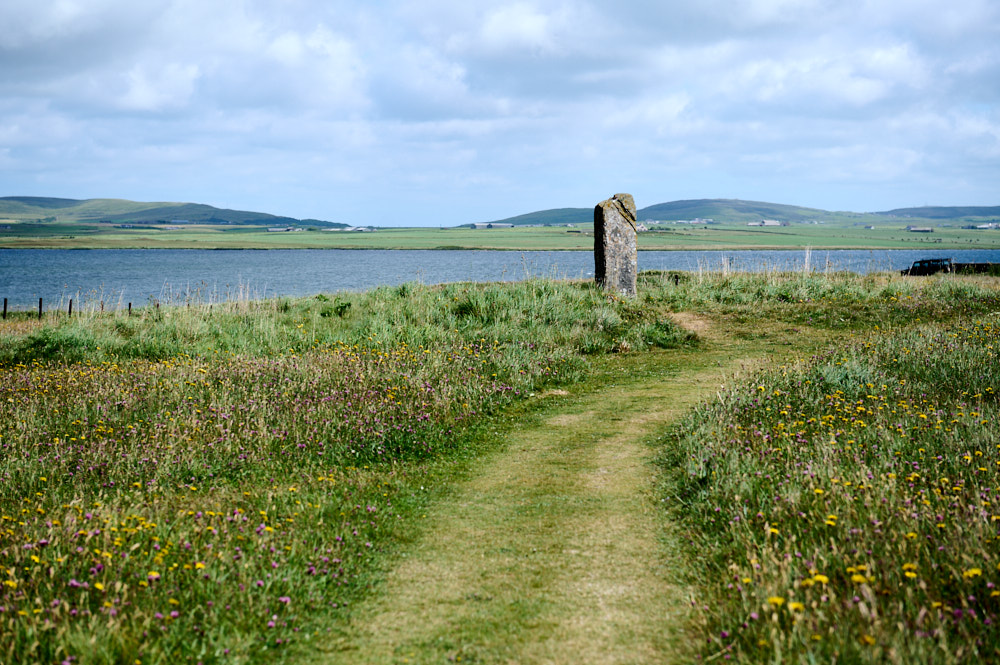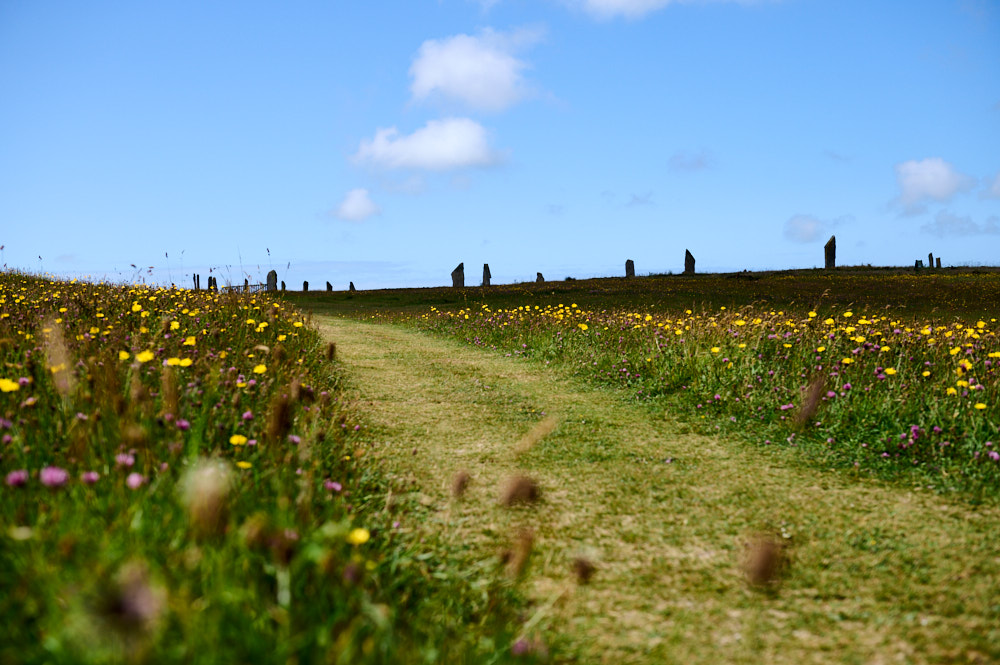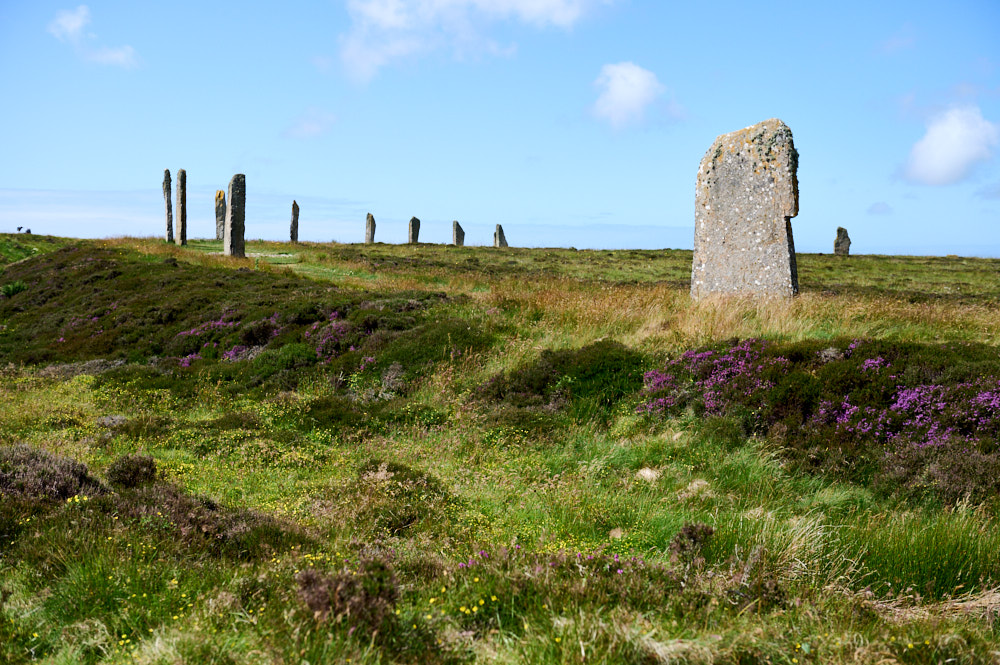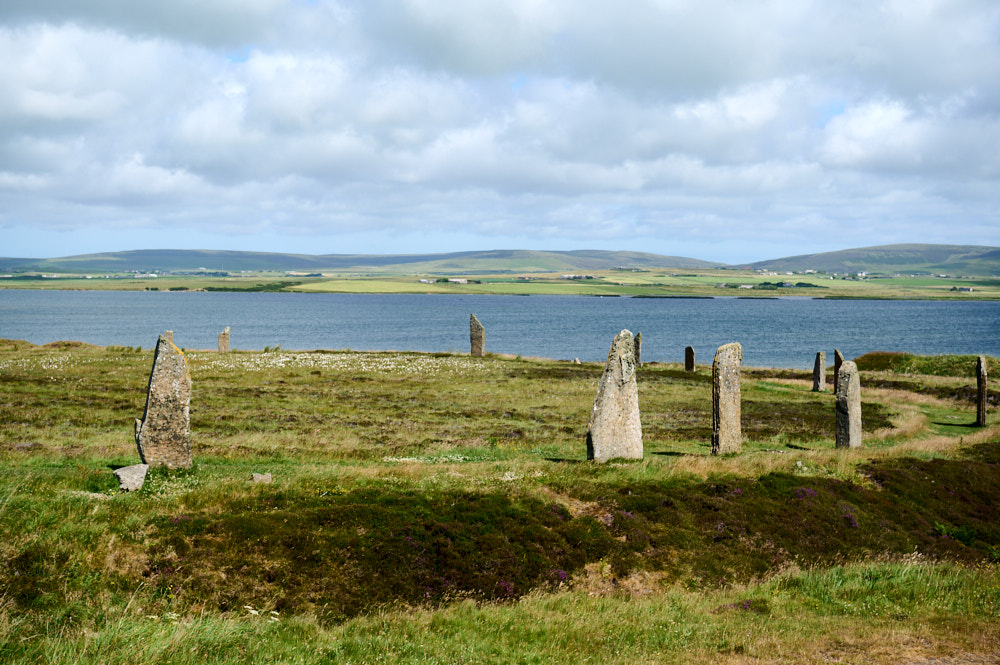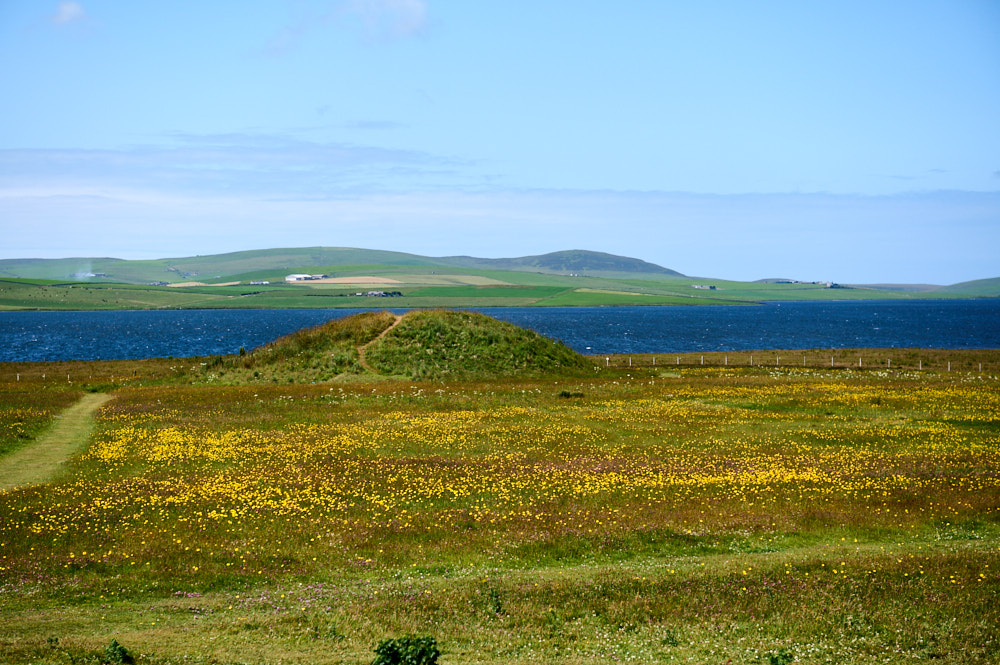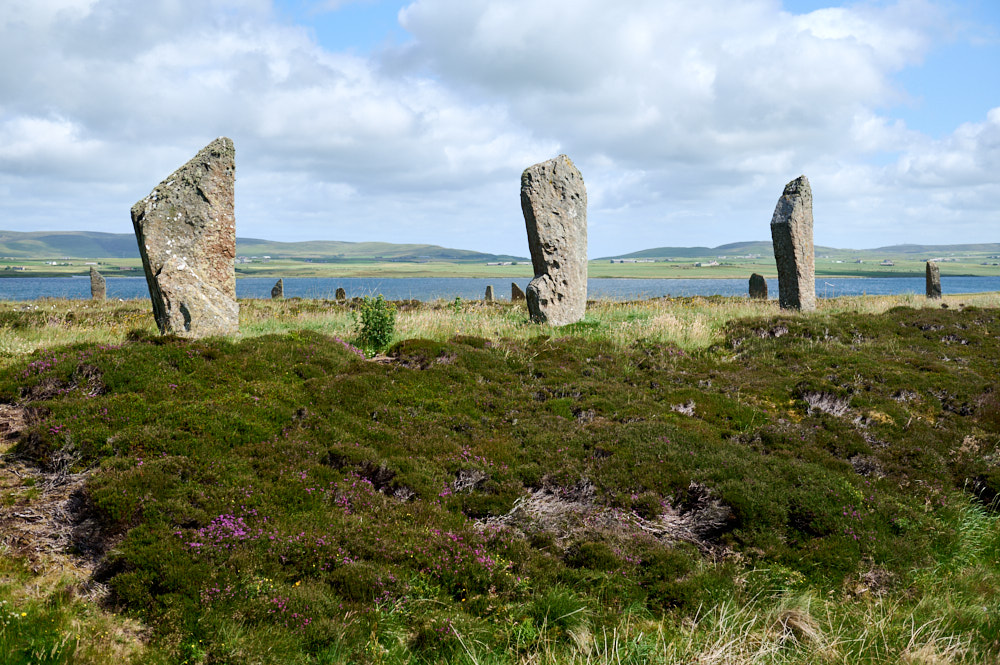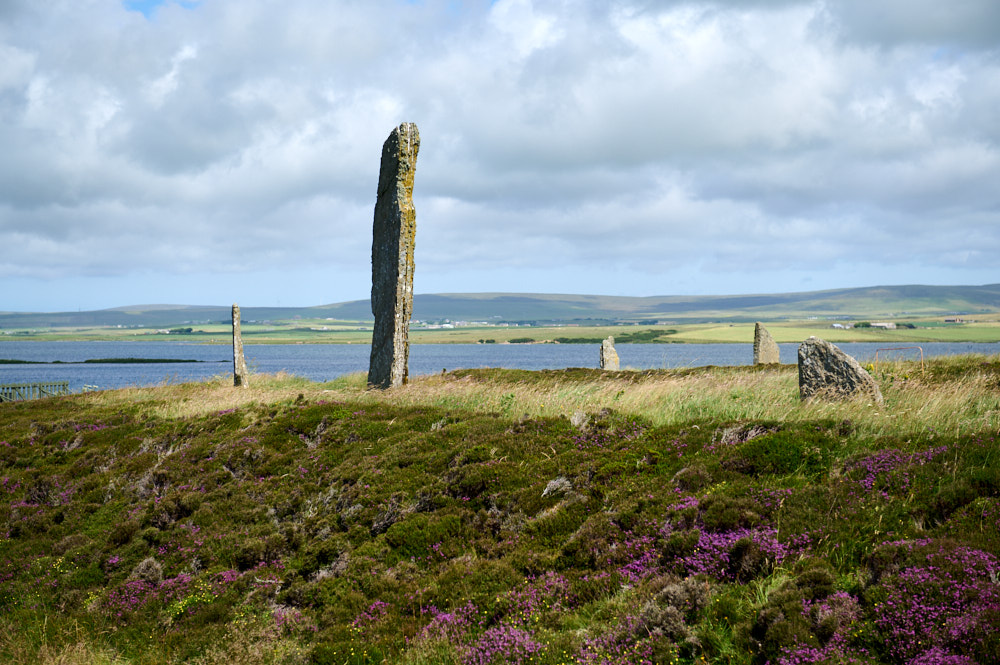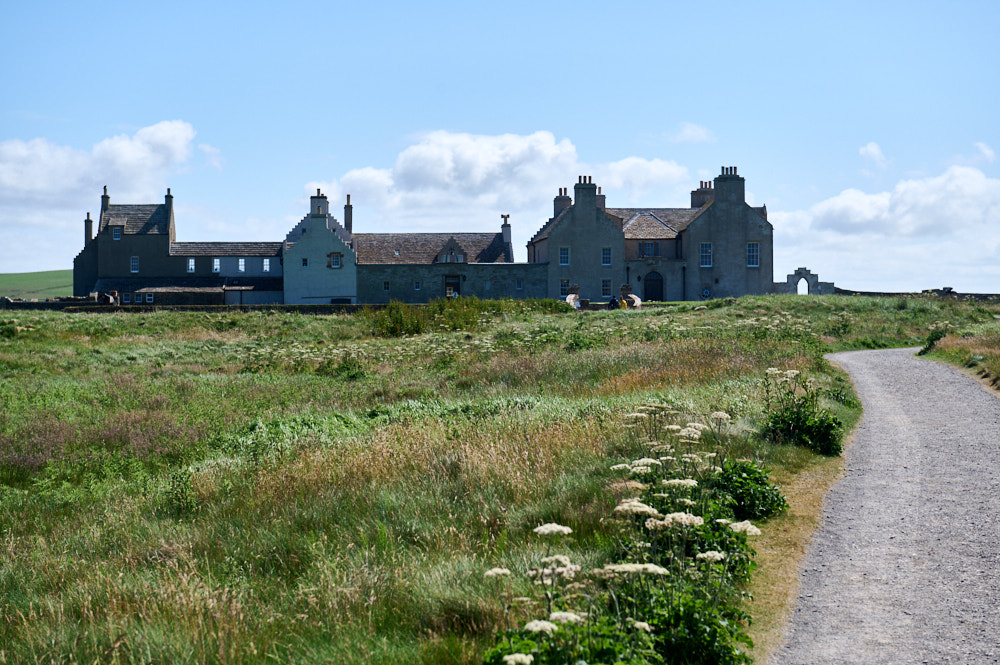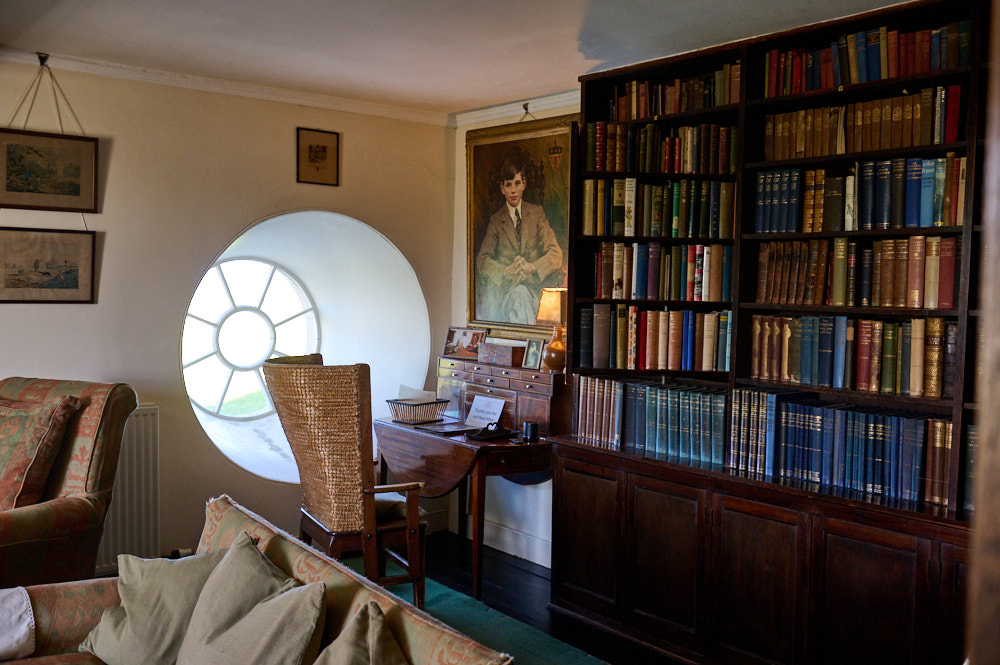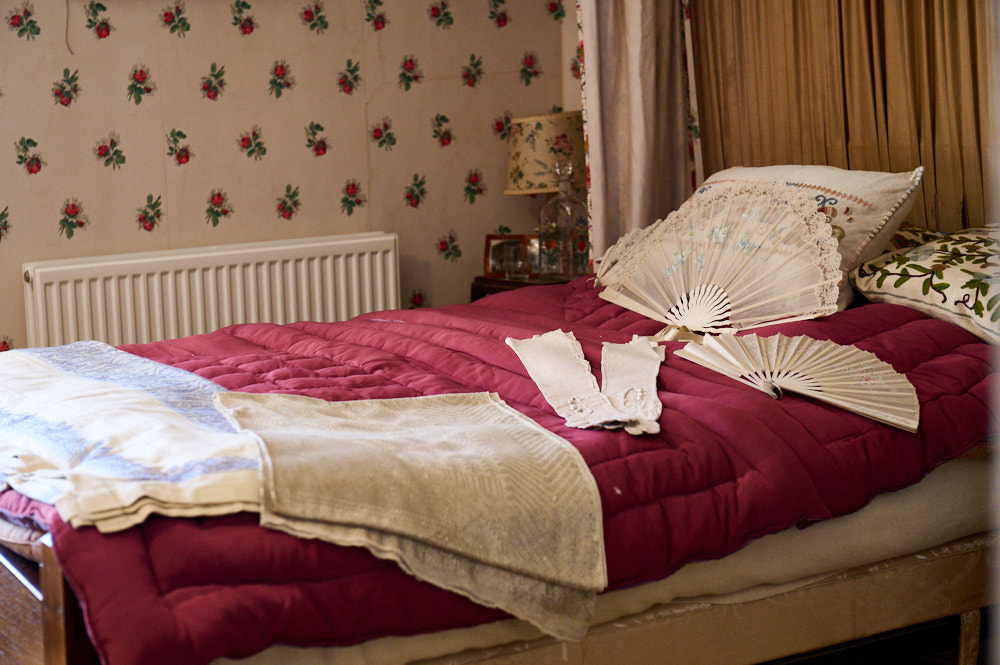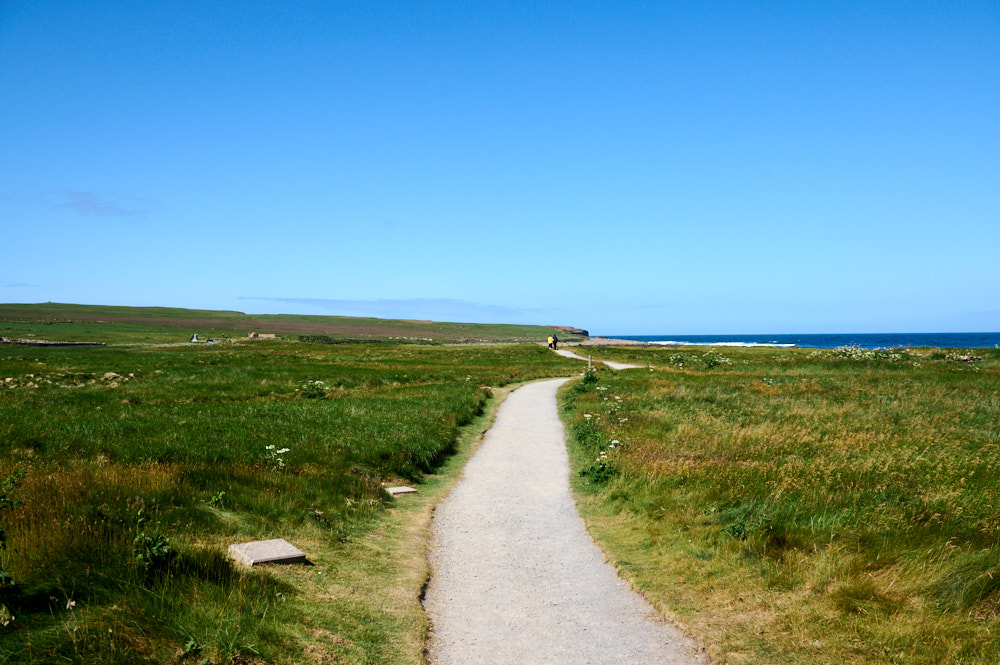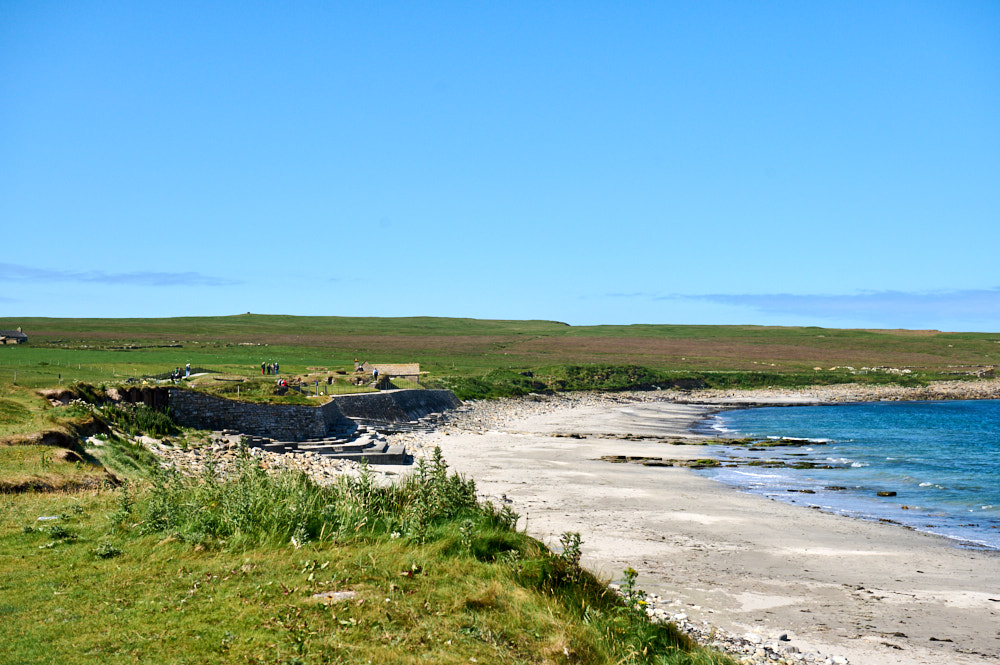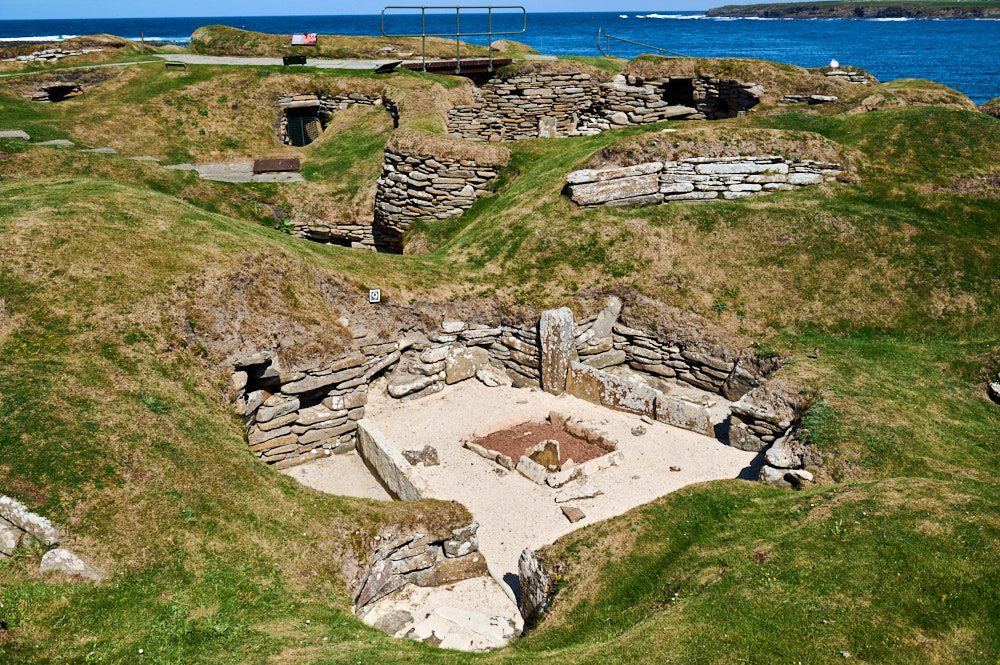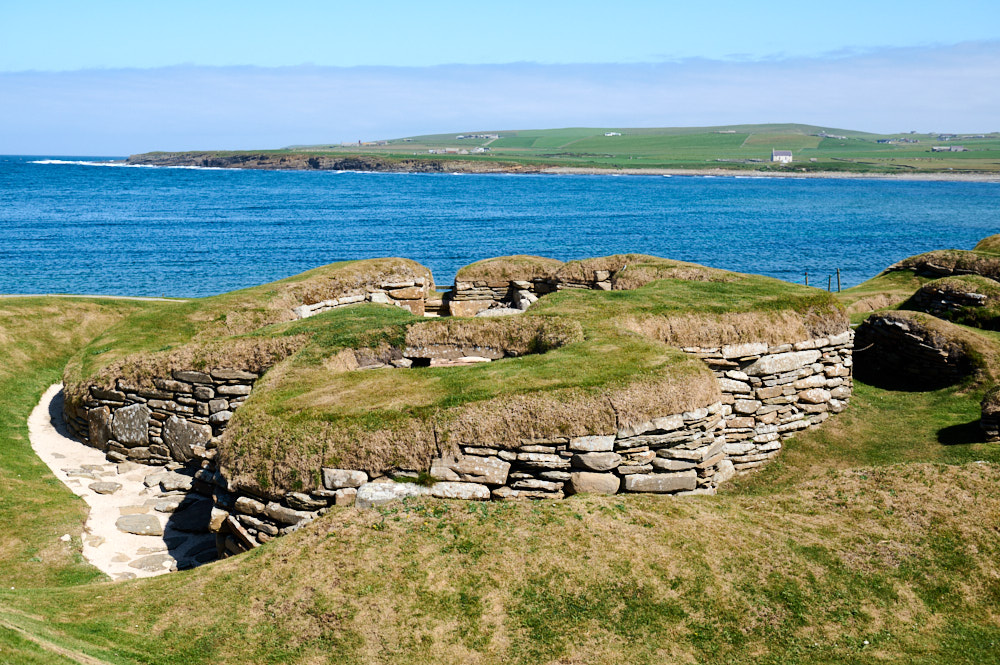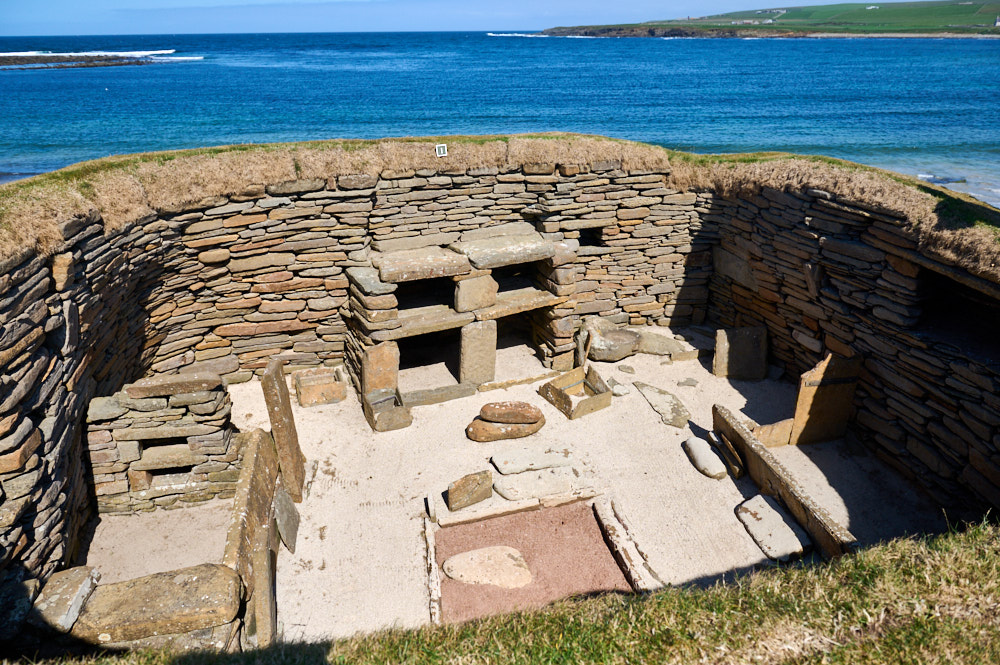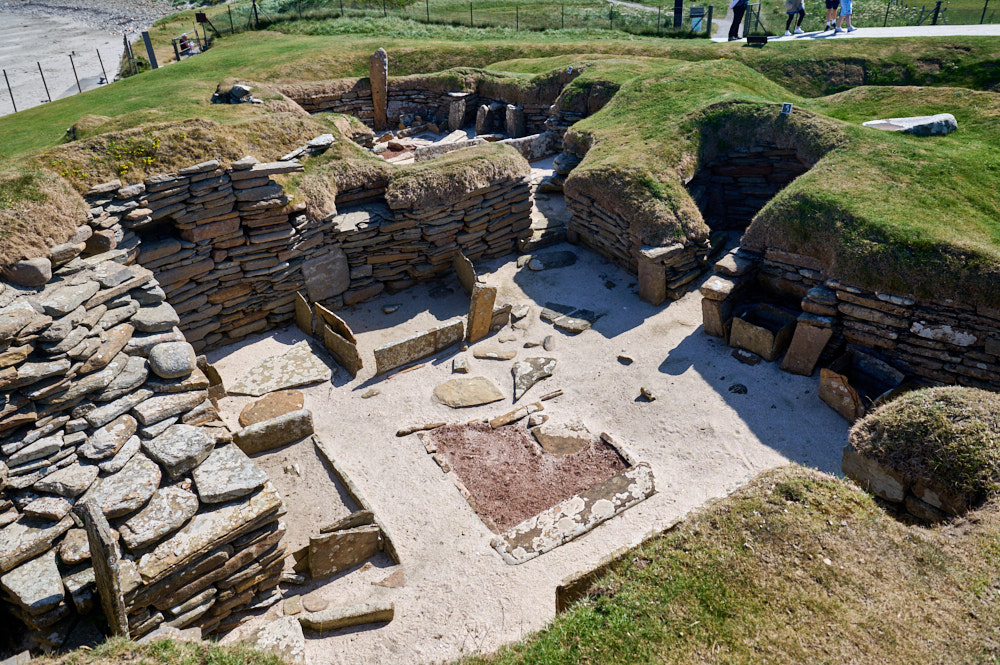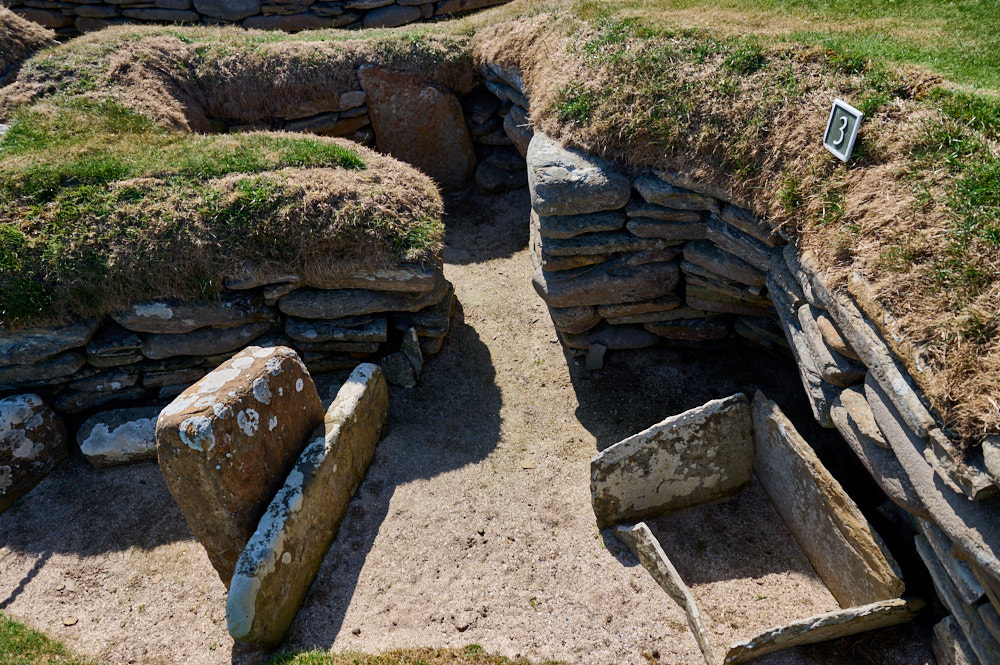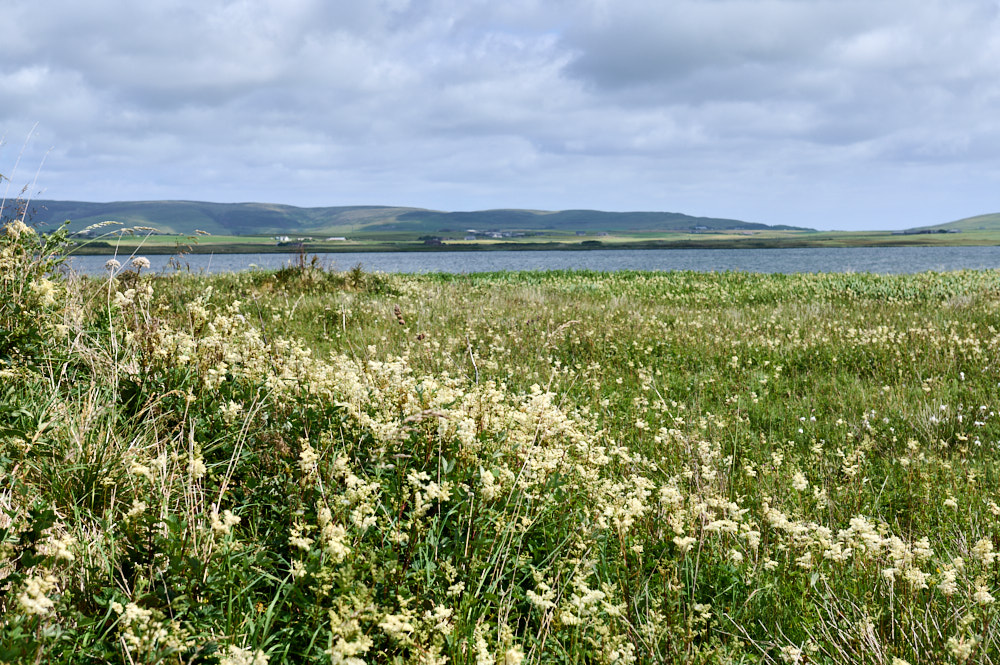 The Ring of Brodgar is one of the biggest stone circles in the UK – it is only one of two in the Ness of Brodgar, the heart of the Neolithic Orkney.
The Ring of Brodgar is one of the biggest stone circles in the UK – it is only one of two in the Ness of Brodgar, the heart of the Neolithic Orkney.
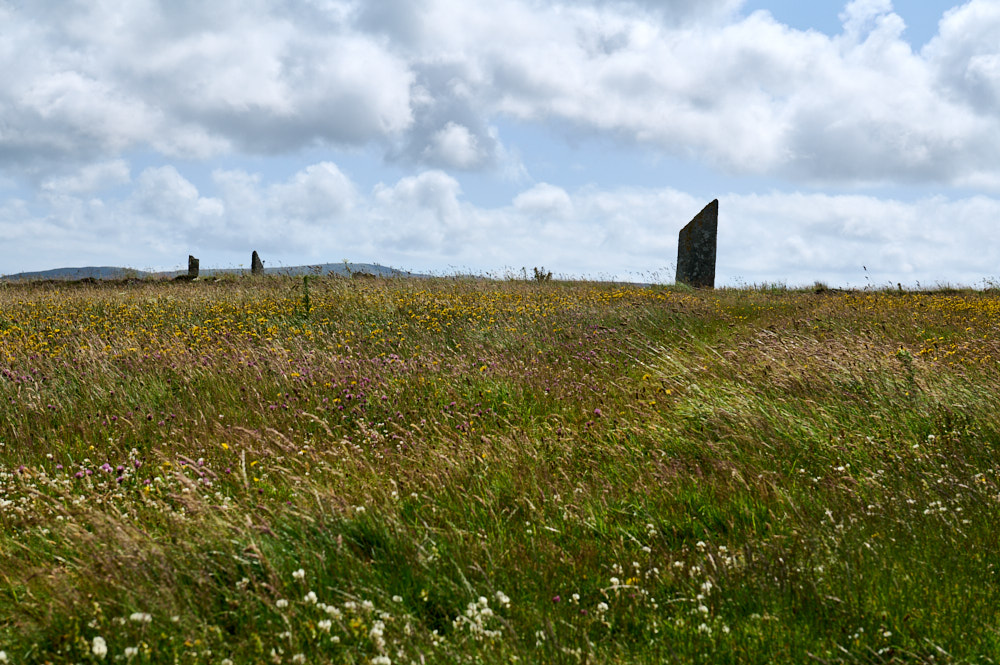
The 27 remaining stones have a height between 2 metres to almost 5 metres and form a circle with a diameter of 103.6m. Once there probably stood 60 stones in this circle.
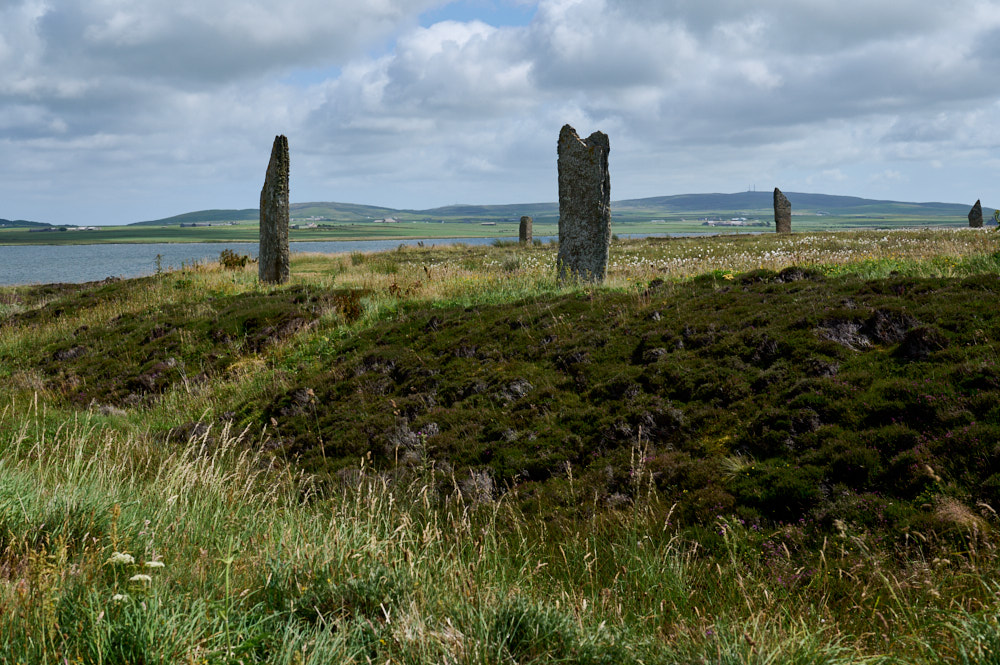
The Ring of Brodgar was surrounded by a ditch that used to be a few metres deep and accessible via two causeways and probably dates from between 3000BC and 2500BC.
The Ness of Brodgar was a meeting and a ceremonial place – surrounded by hills this land between the two lochs feels like a natural amphitheatre.
The Ring of Brodgar may have been involved in ceremonies celebrating the relationship between living and past communities. It’s also been suggested that the sites in the surrounding area were used for observations of the moon from the Ring of Brodgar,
(Historic Environment Scotland)
The Ring of Brodgar is right in the Heart of the Neolithic Orkney World Heritage Site. Besides the Ring, the site also includes Maeshow, Skara Brae and the Ring of Stenness and the adjacent standing stones. The Ring of Brodgar is the youngest built and was built about 500 years later than the other ones.
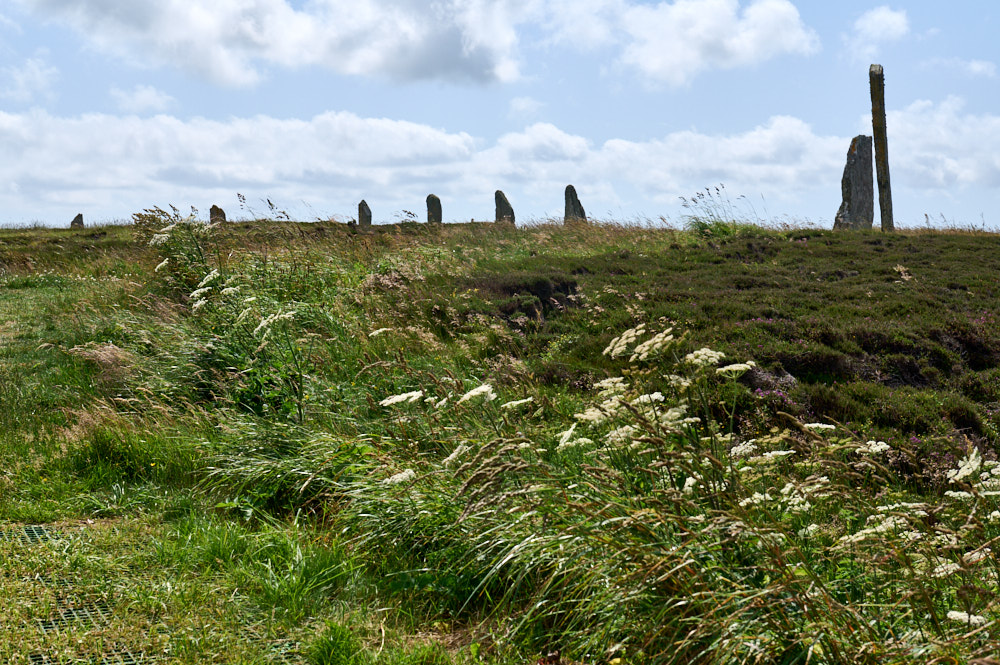
The stones came from seven different quarries in Orkney and it is believed they were transported on a bed of algae.
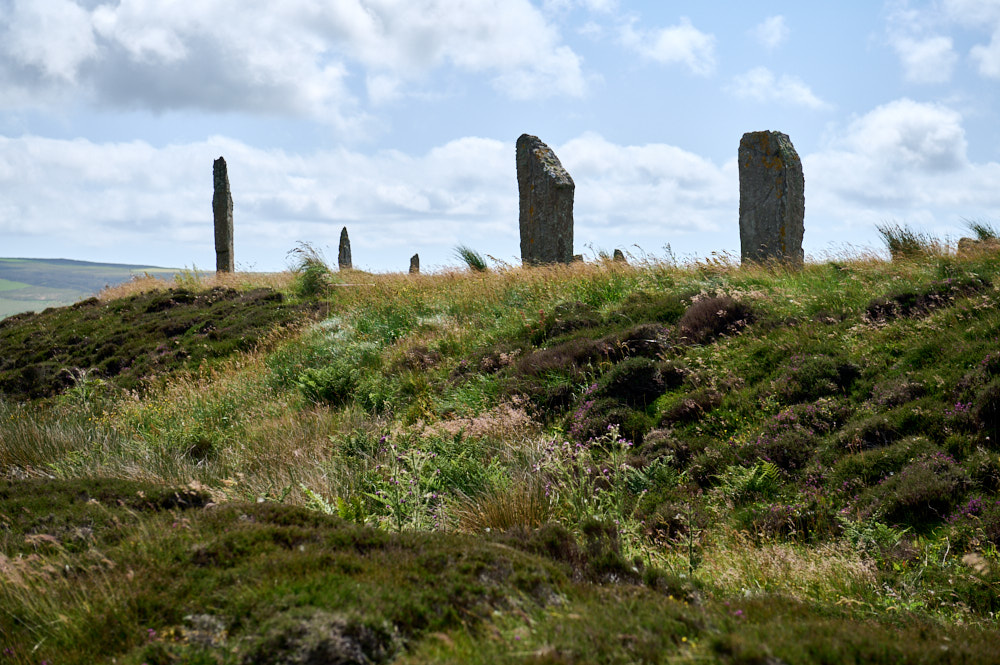

It is a beautiful walk around the area, there are also 13 burial mounds. And as there is so much more to see at the Ness of Brodgar I came back a few days later.
